BACK TO finale_winnerS
Best Sustainable Design: Interior Design Category
FOOD WASTE TRANSFORMATION PROJECT: CREATING NEW VALUE FOR TALAADTHAI MARKET, PATHUM THANI
WASTE TO WORTH TALAADTHAI WASTE TO WORTH TALAADTHAI reimagines waste as a design opportunity. Why bricks? Inspired by architect Boonserm Premthada’s work with elephant dung bricks, this project recognizes that organic fiber—like that found in peels and vegetable matter—has structural potential. Bricks are scalable, easy to manufacture, and carry functional and symbolic meaning. They allow […]
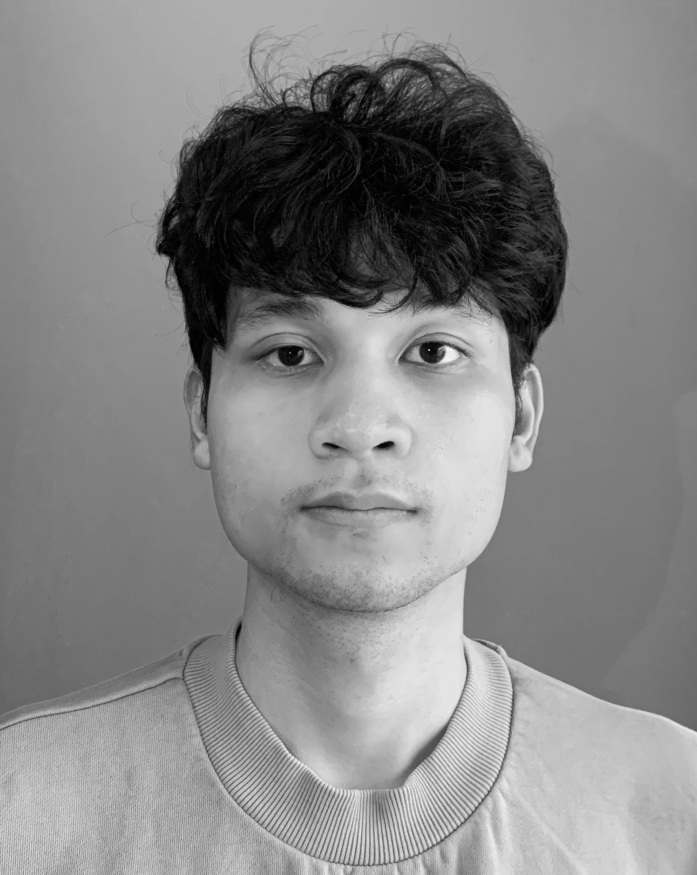
WASTE TO WORTH TALAADTHAI
WASTE TO WORTH TALAADTHAI reimagines waste as a design opportunity.
Why bricks? Inspired by architect Boonserm Premthada’s work with elephant dung bricks, this project recognizes that organic fiber—like that found in peels and vegetable matter—has structural potential. Bricks are scalable, easy to manufacture, and carry functional and symbolic meaning. They allow for local material reuse and can be reintegrated into the very market that produced the waste, creating a full circle narrative.
The project site includes two main structures: an operations building and a showroom. The operations building is divided into two floors. On the first floor, sorted waste arrives via loading docks, is categorized into nine color-based groups (red, yellow, green, purple), and is ground into pigment powder. These pigments are stored in transparent containers, creating a display of nature’s hues. The second floor handles brick production and drying. Here, pigments are mixed with clay and husks in color-coded stations and shaped into bricks, which are then dried on steel-frame racks that allow sunlight and air to circulate.
Each architectural element within the project reflects the design ethos—colors of the bricks correspond to their ingredient source, forming visual patterns and archways. These colored bricks are then delivered to the showroom area, where they are used to construct modular kiosks for market vendors. Each kiosk includes simple plug-in units for baskets and goods, and vendors can select colors and patterns based on their preference.
One of the project’s most meaningful elements is its integration with the community. In collaboration with local correctional facilities, the project provides work opportunities for inmates as part of a rehabilitation initiative. All stations are designed to be user-friendly, requiring no prior technical knowledge.
This initiative is capable of producing 60,480 bricks per month. It proposes a new layer of sustainability, creativity, and community involvement—converting what was once discarded into something useful, beautiful, and local.
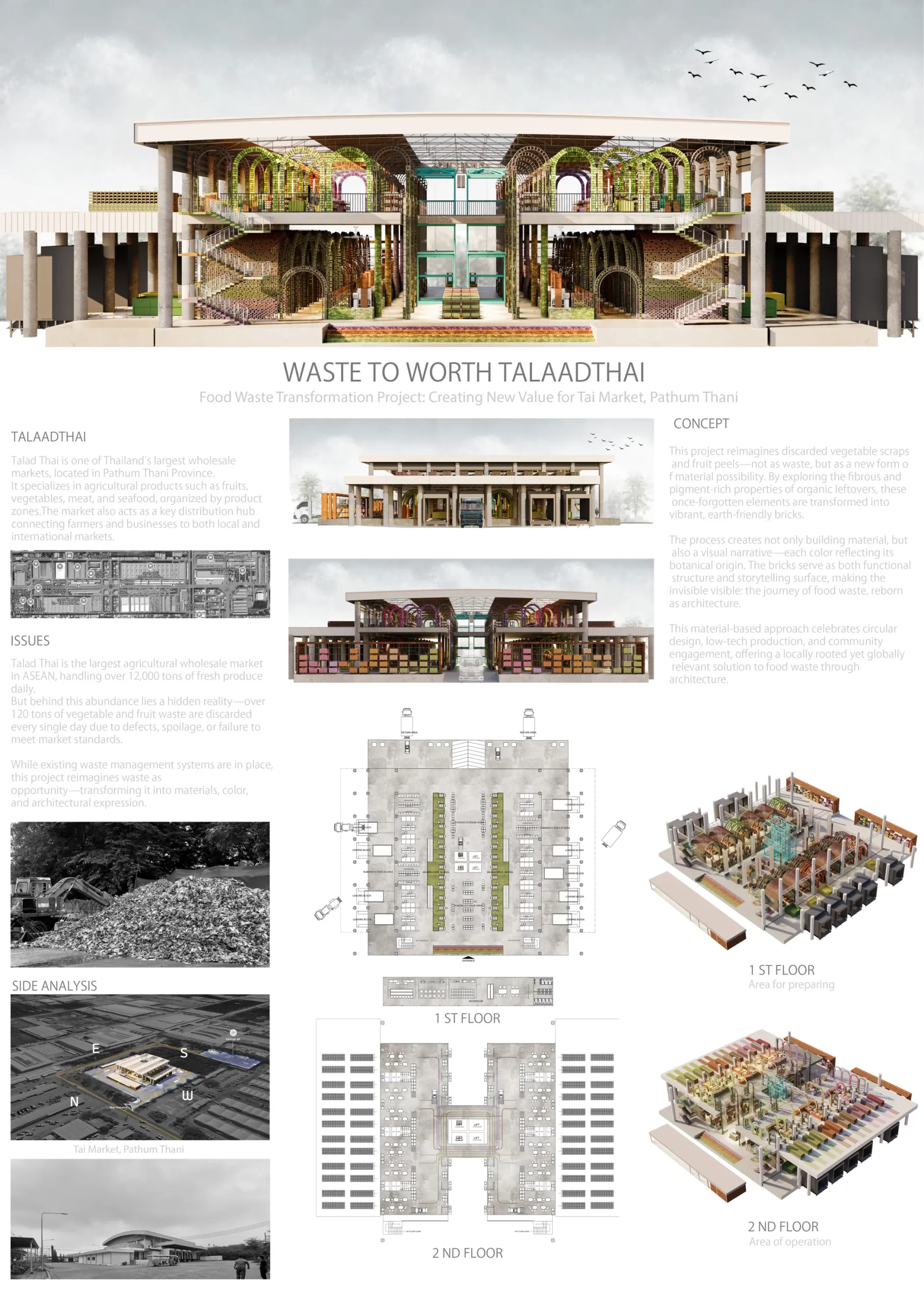
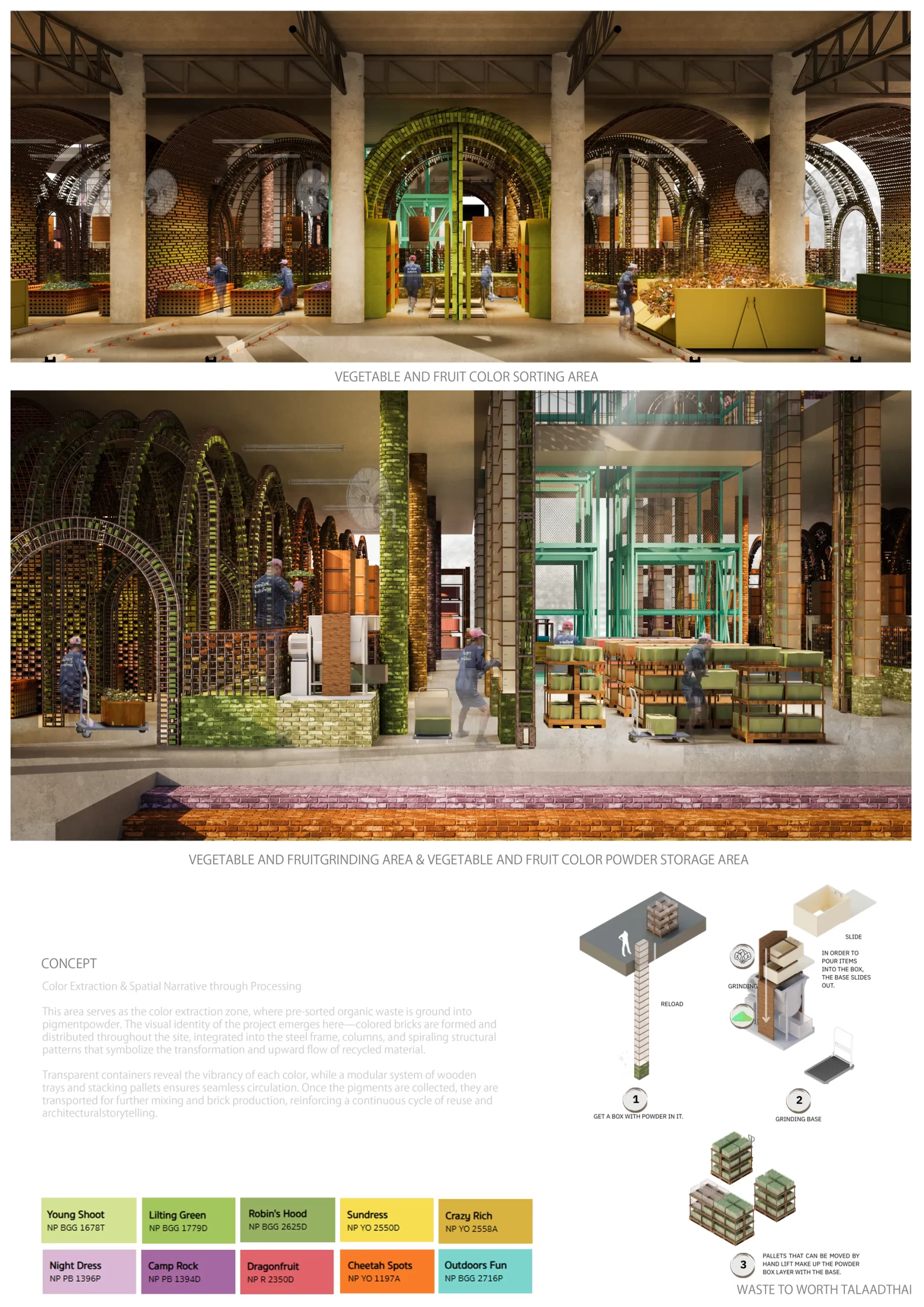
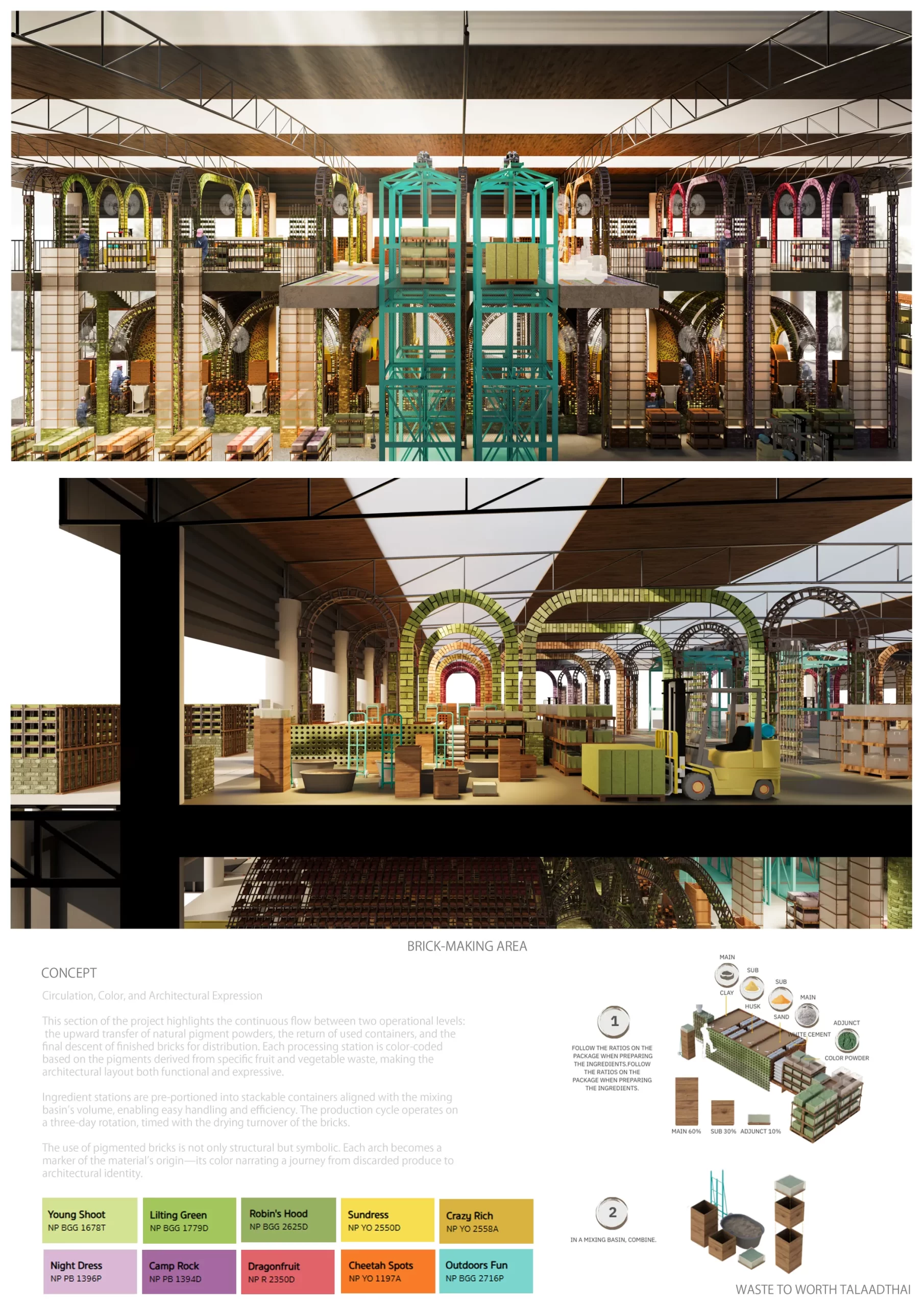
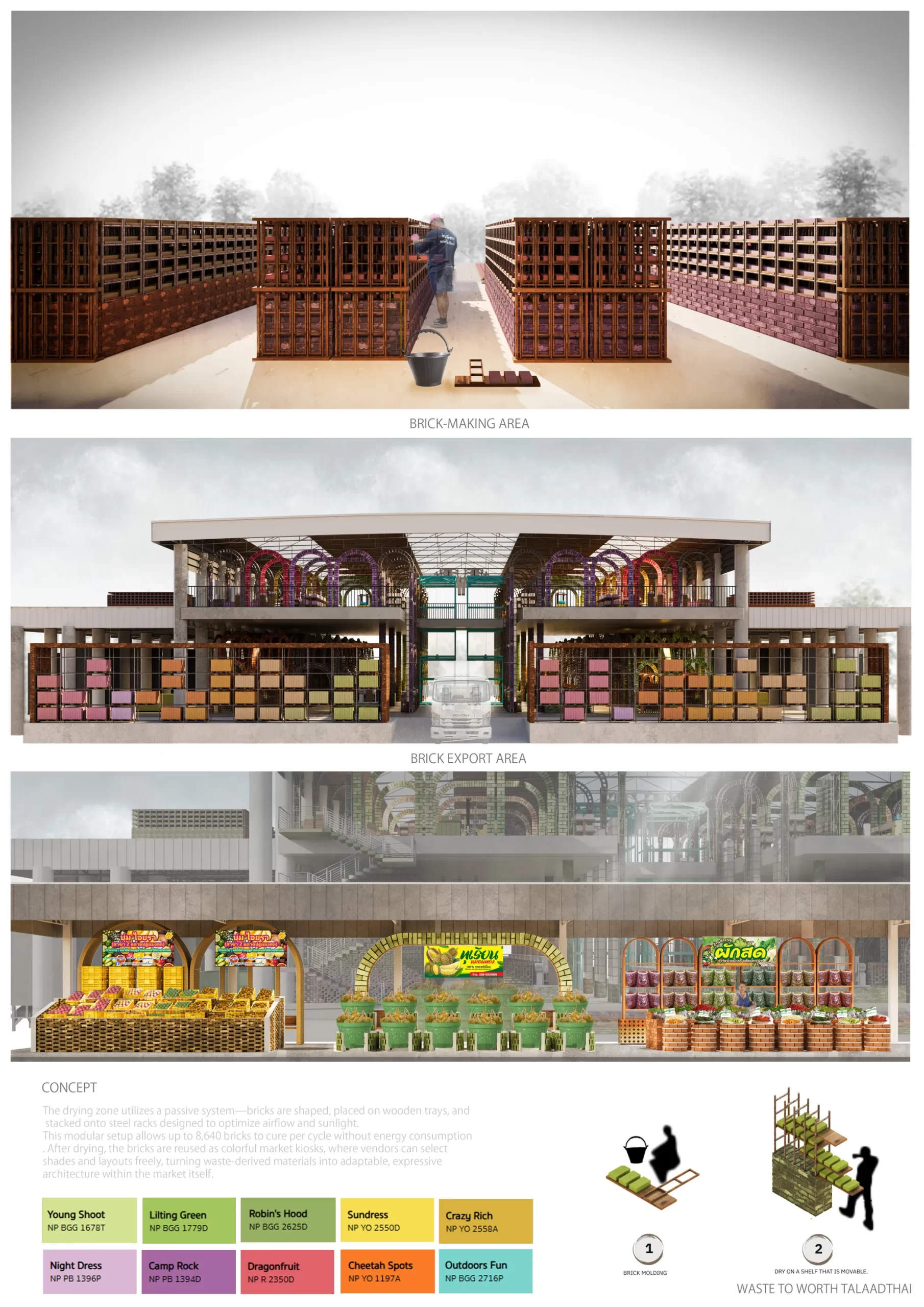
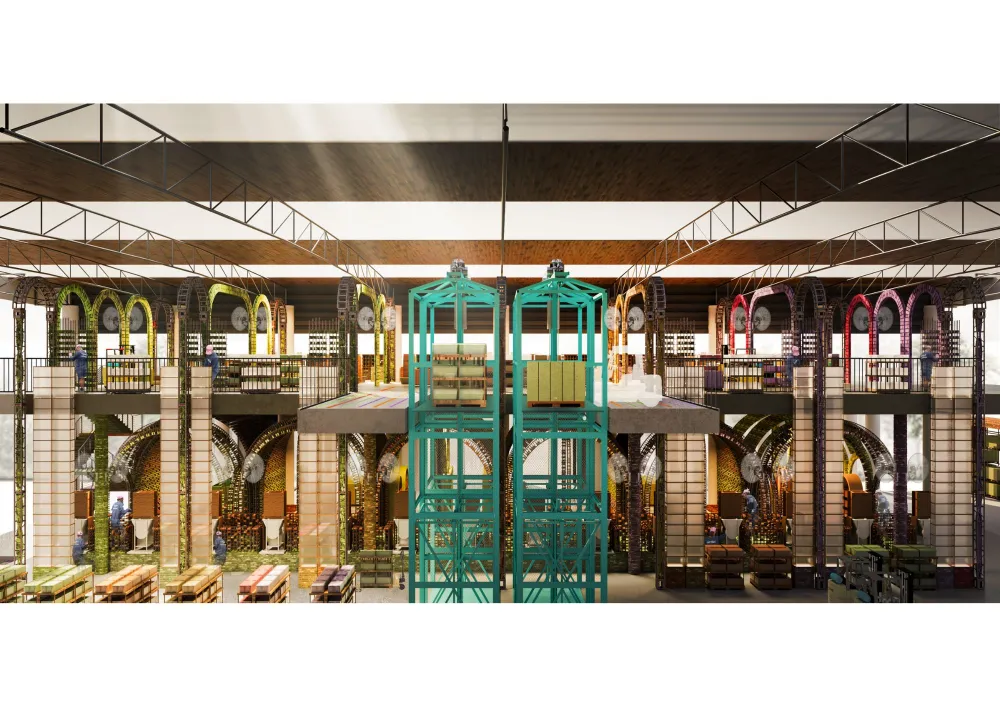
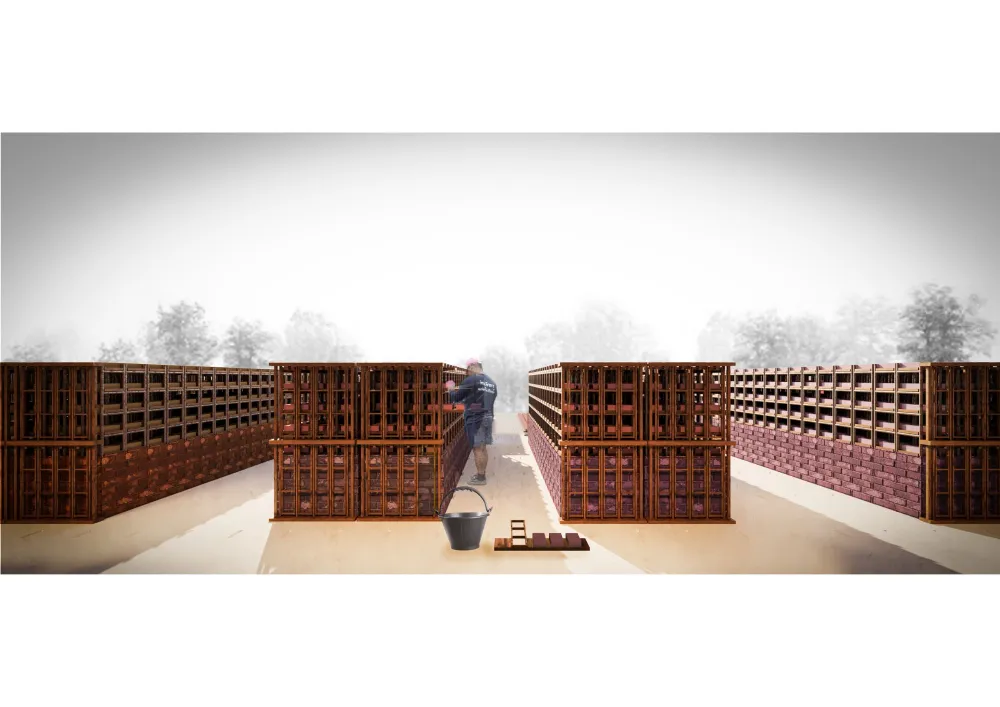
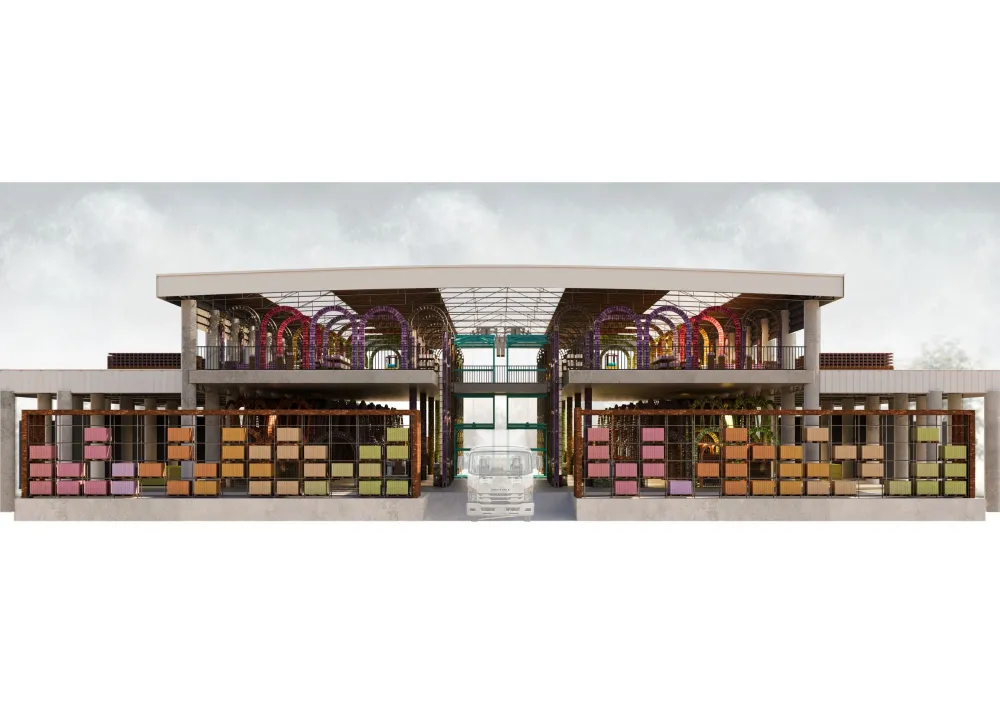
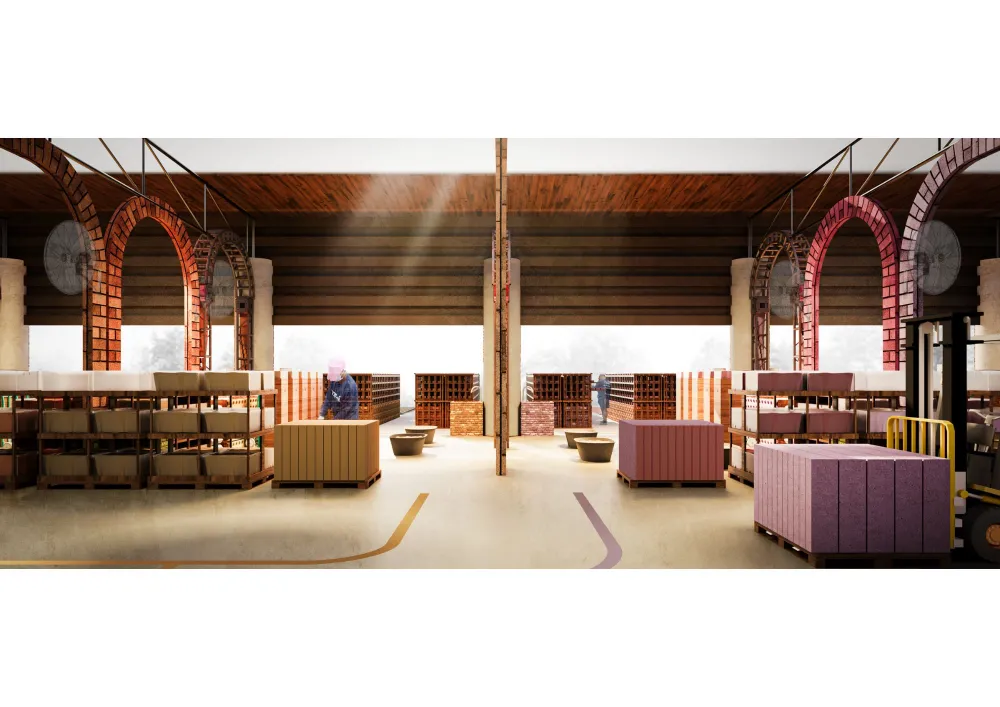
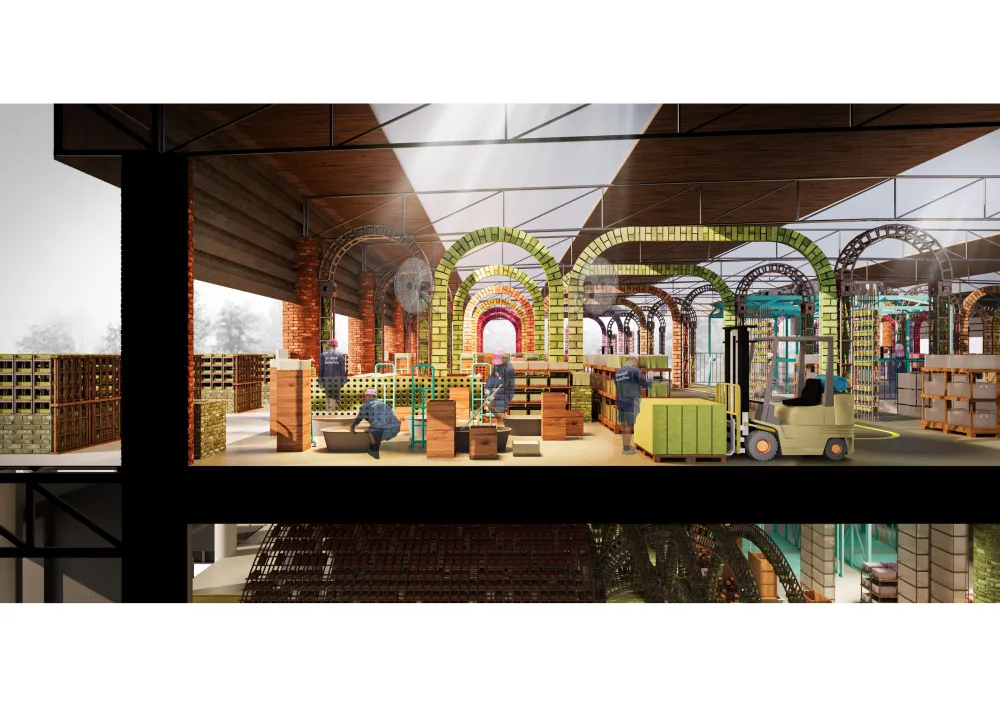
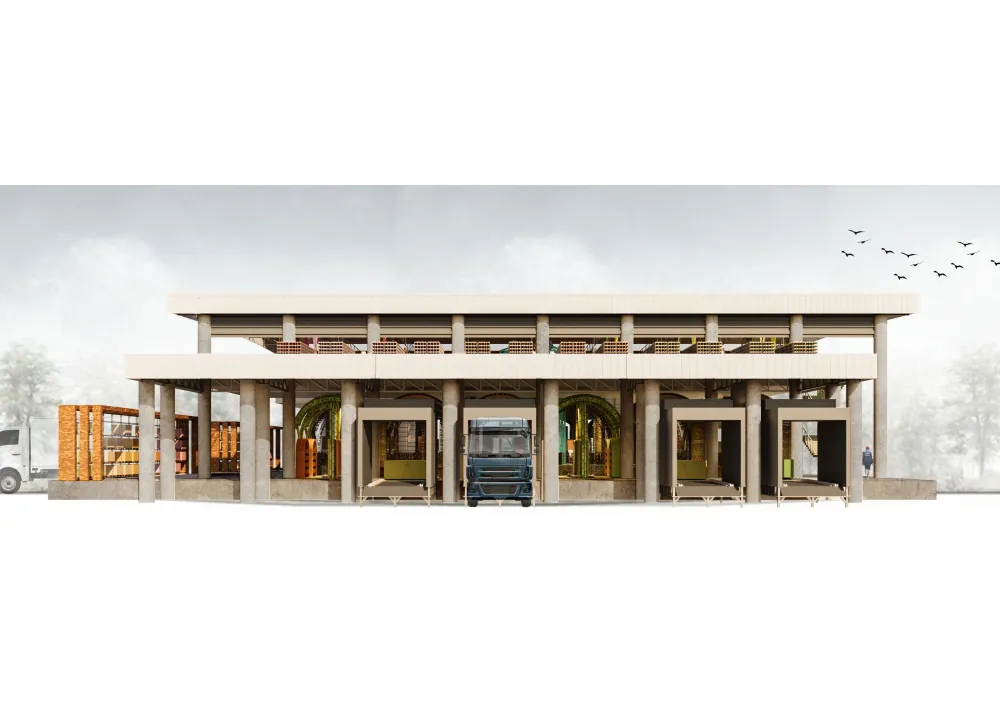
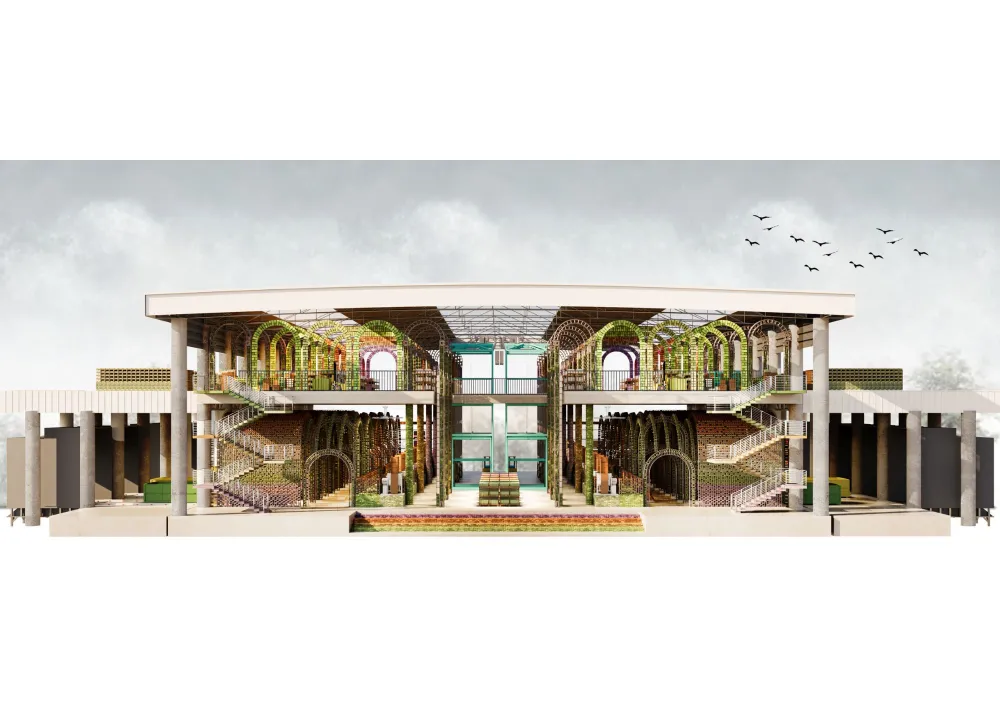
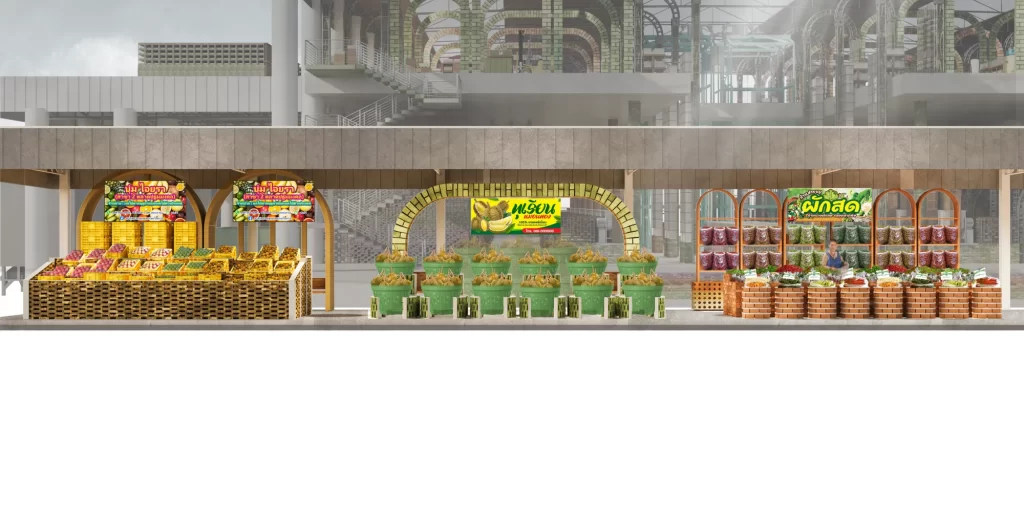
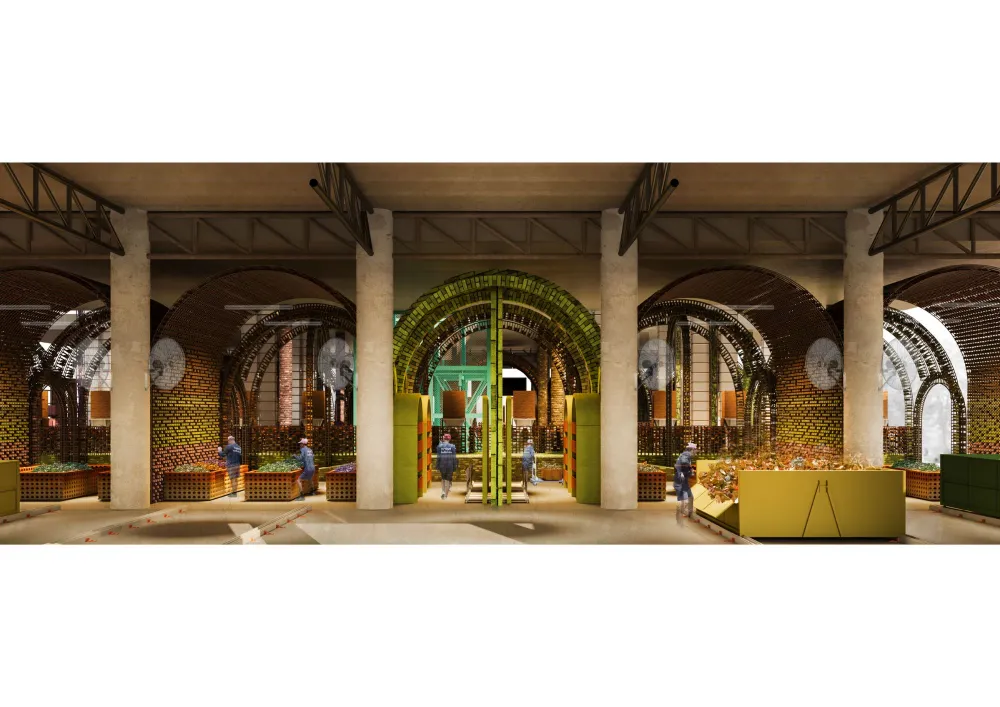
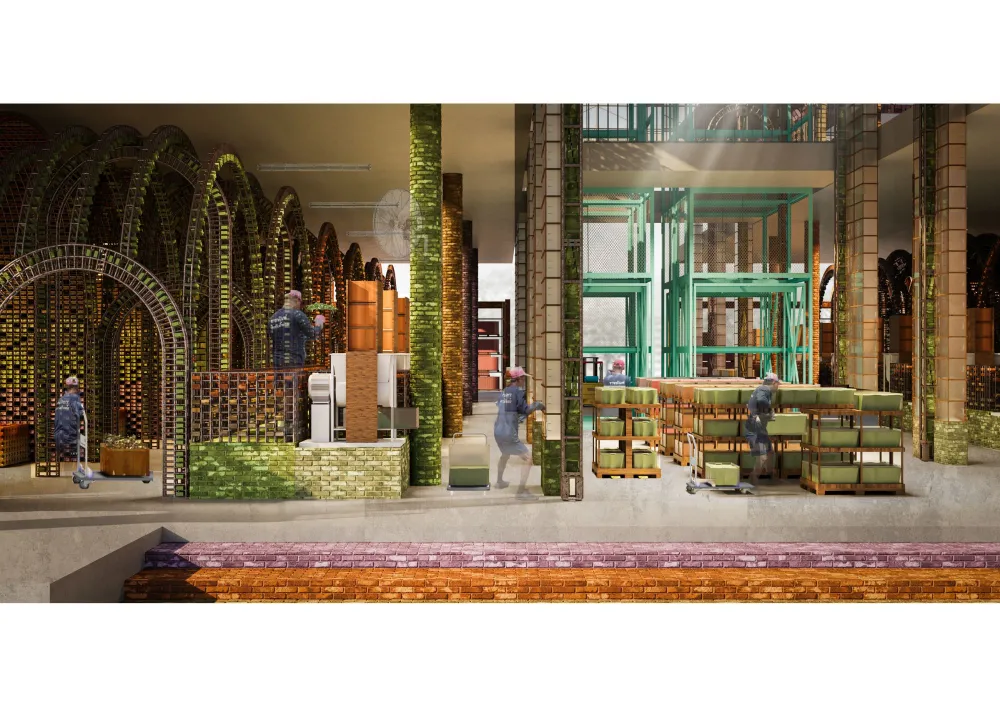
Showcase your design to an international audience
SUBMIT NOW
Image: Agrapolis Urban Permaculture Farm by David Johanes Palar
Top
WASTE TO WORTH TALAADTHAI WASTE TO WORTH TALAADTHAI reimagines waste as a design opportunity. The project site includes two main structures: an operations building and a showroom. The operations building is divided into two floors. On the first floor, sorted waste arrives via loading docks, is categorized into nine color-based groups (red, yellow, green, purple), and is ground into pigment powder. These pigments are stored in transparent containers, creating a display of nature’s hues. The second floor handles brick production and drying. Here, pigments are mixed with clay and husks in color-coded stations and shaped into bricks, which are then dried on steel-frame racks that allow sunlight and air to circulate. Each architectural element within the project reflects the design ethos—colors of the bricks correspond to their ingredient source, forming visual patterns and archways. These colored bricks are then delivered to the showroom area, where they are used to construct modular kiosks for market vendors. Each kiosk includes simple plug-in units for baskets and goods, and vendors can select colors and patterns based on their preference. One of the project’s most meaningful elements is its integration with the community. In collaboration with local correctional facilities, the project provides work opportunities for inmates as part of a rehabilitation initiative. All stations are designed to be user-friendly, requiring no prior technical knowledge. This initiative is capable of producing 60,480 bricks per month. It proposes a new layer of sustainability, creativity, and community involvement—converting what was once discarded into something useful, beautiful, and local.
Why bricks? Inspired by architect Boonserm Premthada’s work with elephant dung bricks, this project recognizes that organic fiber—like that found in peels and vegetable matter—has structural potential. Bricks are scalable, easy to manufacture, and carry functional and symbolic meaning. They allow for local material reuse and can be reintegrated into the very market that produced the waste, creating a full circle narrative.













